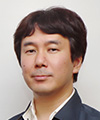 |
|||||||
|
|
|||||||
|
Feature Articles: 5G Field Trials toward Social Implementation Vol. 16, No. 10, pp. 39–46, Oct. 2018. https://doi.org/10.53829/ntr201810fa7 Overview of 5G Field Trials toward Social Implementation, and Experimental Trials of 5G in the Entertainment AreaAbstractThe Ministry of Internal Affairs and Communications of Japan began field trials of fifth-generation mobile communications systems (5G) in fiscal year 2017. This effort is aimed at developing a new market through social implementation of 5G. These Feature Articles explain the results of experimental trials conducted by NTT DOCOMO and NTT Communications. In this article, a brief overview of the project is outlined, and some experimental examples concerning applications of 5G in the entertainment area are introduced. Keywords: 5G, experimental trials, entertainment 1. IntroductionFifth-generation mobile communications systems (5G) provide not only large capacity and ultrahigh throughput but also new capabilities and features such as massive connectivity, low latency, and high reliability. Early realization of 5G is desired as an information and communication technology (ICT) infrastructure in the Internet of Things (IoT) era, which is essential for economic growth. To ensure that Japan leads the world in social implementation of 5G while strengthening collaboration with the United States, Europe, and other Asian countries, the Ministry of Internal Affairs and Communications (MIC) of Japan initiated a research and development (R&D) project in fiscal year 2015 to achieve a 5G system, and NTT DOCOMO and NTT have been entrusted with two projects related to that R&D. Additionally, in October 2016, MIC took steps to study the technical requirements of 5G by consulting with the Information and Communications Council and by conducting studies on securing radio frequencies for 5G. MIC began comprehensive demonstration testing of 5G (5G Field Trials [1]) in fiscal year 2017. These Feature Articles introduce the experimental trials conducted by NTT DOCOMO and NTT Communications and explain their results [2, 3]. In this article, we describe the trial conducted by NTT DOCOMO under a project commissioned by MIC to examine the technical specifications for 5G that can achieve a data communication speed exceeding 10 Gbit/s in densely populated areas (study group GI) as part of the 5G Field Trials, and introduce examples of experimental trials carried out in the entertainment area. 2. Overview of 5G Field TrialsThe 5G Field Trials are led by Japan’s MIC and are being carried out in various application areas. The trial project involves six study groups, as listed in Table 1. The trials have started in Tokyo and other metropolitan areas as well as in rural areas. We aim to lead the world in social implementation of 5G in Japan by establishing an open environment in which companies and universities around the world can participate and by contributing to international standardization activities.
NTT DOCOMO is undertaking the implementation of study group GI as part of the 5G Field Trials. We are carrying out 5G performance evaluations in densely populated urban environments with user equipment (UE) that moves at speeds up to 30 km/h to elucidate radiowave propagation characteristics in the frequency bands of 3.6–4.2 GHz and 4.4–4.9 GHz (3.7-GHz band etc.), and 27.5–29.5 GHz (28-GHz band) in Japan, and evaluating ultrahigh-speed communication using these frequency bands with the aim of introducing 5G in these bands. Specifically, while utilizing various 5G wireless platforms, which is the result of the R&D project to realize the 5G system, we efficiently prepared an environment for the field trials that combine services and applications for the 5G era. By providing such opportunities for vertical players from the viewpoint of telecommunications carriers, we are facilitating the creation of new industries based on 5G and strengthening the competitiveness of Japanese companies, as well as encouraging collaboration between service providers, wireless platform vendors, and carriers. Study group GI is conducting various investigations and analyses. Technical aspects such as evaluation of radiowave propagation characteristics and simulation-based evaluations on radio transmission characteristics are being evaluated by the study group, while the feasibility of services and applications using 5G (Table 2) are being evaluated in cooperation with various partner companies in three application areas (namely, entertainment, smart city/smart area, and medical).
3. Examples of experimental trials in the entertainment areaWe conducted various experimental trials related to the entertainment area by using high-presence, high-resolution video transmission using the features of 5G ultrahigh-speed and large-capacity communication (Fig. 1).
3.1 Virtual reality (VR) entertainment systemIn cooperation with Tobu Railway Co., Ltd., Tobu Tower Skytree Co., Ltd., and Panasonic Corporation, we conducted an experimental trial of a VR entertainment system (Fig. 2) that transmitted 5G video images at Tokyo Skytree Town® Space 634 from December 8 to 10, 2017. The 5G VR images were taken with a 4K high-resolution 360-degree live camera for viewing on a wide-viewing-angle (220°) head-mounted display. A maximum transmission bandwidth of about 70 Mbit/s is required for transmission of live concert video with high presence; even so, it was possible to deliver images to multiple users in real time via 5G wireless transmission. In addition, the image transmission was kept stable by compressing the video according to the ever-changing wireless transmission condition of each user by means of a variable-rate video encoder.
It is assumed that this system will be used as a new form of entertainment by which viewers can experience the realistic feeling of being in a sports stadium or at a concert venue. About 70% of the general public who experienced the system evaluated it favorably and commented that they would like to experience live concerts remotely via the system. 3.2 New communication system utilizing mixed reality (MR)During the same period as the demonstration described in the preceding section, in cooperation with Tobu Railway, Tobu Tower Skytree, and Huawei Technologies Japan K.K., we connected the indoor observation deck (Tembo Deck; 340 m above) of Tokyo Skytree® to the rooftop of EKIMISE of Asakusa Station via 5G, and we experimentally demonstrated a new communication style, namely, reproducing the image of a person in an area further away in three-dimensional (3D) images on a head-mounted display by using MR technology (Fig. 3). Although the wireless transmission conditions were challenging, (such as a long transmission distance of 1.2 km and insertion loss due to the glass covering of the Tembo Deck), a maximum transmission rate of 4.5 Gbit/s was achieved, and a 3D image of the person was successfully reproduced on the holographic display at a remote location. Real-time conversations with realistic sensations via this system are expected to be utilized for services such as bidirectional 3D video transmission in anticipation of relaying sports events in the future.
3.3 Experimental trials at Tokyo Skytree TownFrom March 5 to 8, 2018, we constructed experimental environments indoors and outdoors at Tokyo Skytree Town and used them to verify the feasibility of services using 5G in densely populated commercial facilities (Fig. 4).
In cooperation with Sharp Corporation, we conducted an experimental trial of multichannel MMT (MPEG Media Transport) transmission of 8K video via 5G, and we confirmed that stable video quality can be obtained by forward-error-correction processing in both the wireless (physical) layer and the video (application) layer. In the preliminary indoor experiments, we successfully transmitted 8K video, which requires an average transmission rate of 80 Mbit/s, on 12 channels via 5G by H.265/HEVC (High Efficiency Video Coding). This technology is expected to be applied, for example, to temporary public viewing at various events. In cooperation with Japan Display Inc., we installed a low power consumption reflective display outdoors and used it to experimentally demonstrate digital signage in a commercial area. In this test, 4K resolution was achieved by tiling four displays, and high-resolution video content—assumed to consist of advertisements—was transmitted from the base station (BS) and sequentially displayed. Consequently, we confirmed that it was possible to display sufficient contrast and color reproducibility without degrading image quality under outdoor light. Through a questionnaire targeting general tourists, we obtained positive feedback on the natural appearance peculiar to a reflective display. In the future, it is expected that combining such a device with 5G UE will enable flexible installation of digital signage without the need for cables (i.e., an AC (alternating current) power supply). In cooperation with Fujitsu Limited, we deployed 5G ultrahigh-density antennas in an indoor model of a commercial facility, and we conducted a test to transmit 4K high-resolution video to UE assumed to be displaying product information at shopping malls. We experimentally demonstrated simultaneous high-resolution video transmission to multiple UE devices in motion (i.e., devices held by numerous pedestrians walking around), and we confirmed that it was possible to stably transmit video by employing dynamic virtual cell technology using cooperative control of the distributed antennas even in complex structures with uneven shapes. 3.4 Wireless transmission test at 5G Trial SiteFrom March 19 to 20, 2018, a 5G wireless transmission test was conducted at a 5G Trial Site constructed at Tokyo Skytree Town by NTT DOCOMO (Fig. 5). The major specifications of the radio devices were as follows: the center frequency was 27.9 GHz, the bandwidth was 730.5 MHz, and there were two units of 128 antenna elements for BSs and 8 antenna elements for UE.
We measured a maximum throughput of 10.2 Gbit/s when two users in outdoor environments were simultaneously connected, and we confirmed that ultrahigh-speed and large-capacity communication was possible in the actual field. 3.5 Experimental trial of live viewing of sports eventsOn March 19, 2018, we conducted an experimental trial of a 4K high-resolution live-viewing service of a sports event at a stadium (Fig. 6).
In this trial, large data of high-resolution videos captured by cameras installed in the stadium were transmitted to a remote area in real time with low latency using 5G, and we demonstrated the prospect of providing entertainment services that enable viewers to experience watching events with a feeling of being there at the same time not only within the stadium facilities but also in the space outside them. More specifically, images captured by three 4K high-resolution relay cameras installed in the outfield seats of the stadium were transmitted to a 5G BS installed near the stadium’s centerfield screen via a cooperative wireless LAN (local area network) system and passive optical network provided by NTT Access Network Service Systems Laboratories and then retransmitted from there to the facilities outside the stadium via 5G. Moreover, in cooperation with INFOCITY, INC., we constructed a 4K live-viewing system by which the multiple high-resolution videos transmitted by 5G were converted by a 4K video switcher for viewing on a large monitor at the live-viewing site. We confirmed that even outside the facility in places located far from the stadium, viewers were able to experience watching an event in real time just as it was being experienced in the stadium itself, and that it was possible to greatly reduce the time needed for setting up the service by using wireless transmission, as compared to that needed by a conventional system. References
Trademark notes“Tokyo Skytree Town” and “Tokyo Skytree” are registered trademarks of Tobu Tower Skytree Co., Ltd. and Tobu Railway Co., Ltd. “Tokyo Solamachi” is a registered trademark of Tobu Railway Co., Ltd. Other brand names, product names, and company names that appear in this article are trademarks or registered trademarks of their respective owners. |
|||||||



















